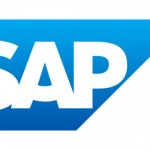FacebookExchangeと正しく付き合う方法とは(英文)
Today’s column is by Gurman Hundal, cofounder of Media iQ Digital, a performance trading specialists.
I have always thought when something becomes too easy or too difficult, it will soon change and evolve in one way or another. It’s how we work as humans; We simplify the complex, and evolve the simple to better fit our personal or business objectives. Facebook Exchange is a great example of Facebook taking the “far too easy’” and evolving it to better suit both its own objectives and those of its clients. This now begs the question: How do we maximize on the strengths of FBX to optimize performance?
Back in the days of traditional ad networks, I remember the exceptional results campaigns could achieve through Facebook’s standard display media. Within a few weeks across a number of campaigns, it was clear to the entire sector that the best performing placements were Facebook display. Then a few years later Facebook shook the industry out of its relaxed, reclining position by stopping the standard display units. As you can imagine there were some unhappy faces, mine included. Why did Facebook do this? Because it was far too easy to deliver performance on a high-reach site based on a standardized Attribution and Measurement model (i.e. last view/click wins). As with all “easy” scenarios, it evolved.
Now we have moved into an era of immense technology innovation; the market is presented with a genuine opportunity to position digital as the lead execution and marketing channel for clients. With this advanced technology in hand, the easiest mistake we can make is to not leverage these tools to also innovate in the field of Trading and Analysis; the other pillar of digital display.
FBX presents a real opportunity to combine the benefits of programmatic buying through first and third party audience data, with social targeting to enhance brand awareness and grow consumer bases for clients.
The market still uses the same attribution and measurement model that emerged over a decade ago, a somewhat shocking fact, but this shouldn’t mean clients have to use Facebook in the same way. If you run on FBX with an image-and-text ad unit, incorporating last view with no measurement strategy, it is likely to outperform other media channels by a considerable margin. Add into the mix retargeting and post-view, and you can expect more than 40% of conversion attribution falling on Facebook. But this is not a smart approach to trading, nor to analysis, on FBX. It’s taking the easy route to justify budgets. It will pay off in the short term, but in the long run will become a barrier to innovation and growth in our sector. Therefore when you hear “FBX is killing it,” ask the question what is the attribution and measurement model behind this, and what trading tactics were deployed to deliver this success?
I would advise running FBX as a separate display/social channel and plugging this into a broader attribution model, which has a sophisticated statistical score, customized to the client. With the substantial data you can overlay (for both buying and analytics purposes), the breadth of data you can dive into can create actionable Insights for clients. Looking at click-based conversion data further up the conversion path, and audience insights off the back of this, is also an area I recommend exploring. The measurement piece is challenging and is still a gap I look forward to seeing many companies building differentials from. I can see in the very near future sophisticated trading tactics being deployed on FBX and effectively helping it make the impact required on client campaigns.
Just as Facebook standard display went through a rapid evolution, Facebook Exchange will undergo continuous change. We are seeing a shift towards Innovation in trading and analysis — one that I look forward to seeing further explored as a refining layer to this important marketplace.
from:
http://www.adexchanger.com/data-driven-thinking/fbx-done-easy-fbx-done-right/












